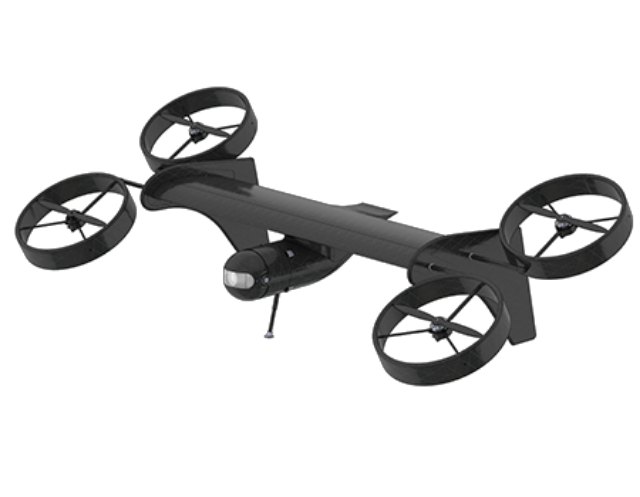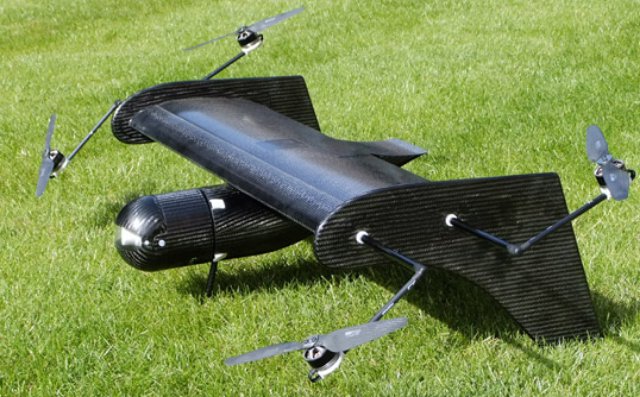was founded in 2002 with the goal of developing and subsequent sales and operational service provision of long-endurance, lightweight, portable, Beyond Visual Line Of Sight [BVLOS] Remotely Piloted Aerial Systems [RPAS] targeted at network-based industries, initially targeting the energy sector, providing a new, automated, much lower cost and safer aerial asset-inspection capability for electricity high-tension power-line and gas pipeline inspections.
The challenge for the industry up to now has been the availability of small, lightweight, Remotely Piloted Aerial Systems that have the necessary endurance, manoeuvrability & safety capabilities to be able to successfully inspect electricity power-lines and gas pipelines over long distances.
The company’s patented Vertical Take-Off and Landing [VTOL] Flying Wing has more than 2½ times the endurance of any equivalent known alternative RPAS of similar size & weight. The company is working with a number of UK and European partners also developing world-class breakthrough technologies that will further enhance the exciting capabilities of this unique aircraft.
VTOL Technologies Ltd is based at the University of Reading and works closely with the UK Technology Strategy Board, as well as the Satellite Applications Catapult and Science & Technology Facilities Council, which are both based at Harwell, Oxfordshire.
The unique capabilities of the VTOL Technologies VTOL Flying Wing start with an advanced flying-wing aerofoil that is able to provide high lift at low speeds, whilst providing low drag at high speed. Coupled with this are four ducted-fan rotors that are able to rotate as pairs. Each ducted-fan pair being able to rotate through 110 degrees from the horizontal through to the vertical.
Such a capability enables the aircraft to both accelerate and decelerate very rapidly indeed to and from the hover. Each ducted-fan propulsion unit is individually controllable. Such a degree of control authority creates a highly manoeuvrable aerial platform that can hover into wind (dramatically reducing hover power consumption) as well as being able to take off vertically from a moving ground based vehicle or maritime platform.
In addition to thrust vectoring control, the airframe also incorporates flapperons, both increasing aerofoil based lift at low forward speeds as well as providing aileron and elevator control authority for standard aircraft flight manoeuvres at speed.
The three critical technologies are being combined with this unique airframe are high-accuracy GNSS [Global Navigation Satellite System], both short-range and medium-range, miniaturised collision-avoidance systems and persistent Beyond Visual Line Of Sight [BVLOS] communications technologies.
The VTOL Flying Wing provides a cost effective, automated BVLOS, long-endurance sensor platform for network-based industries in the fields of energy distribution, transportation, logistics and agriculture for the aerial inspection of infrastructure and assets and rapid transportation / logistics distribution of high-value packages.
This system can be deployed almost anywhere, from land or sea, (even from moving vehicles or ships), to provide a precision-flight, repeatable, network-based asset and infrastructure inspection capability delivering higher accuracy, greater levels of consistently, at lower cost than current methods and emerging “drone” technologies, whilst reducing the need for inspection data post-processing.
Source: Website
To view other’Flying Wing’ projects, click here.


